Introduction
Being advanced at chess means that you either have gaps in your strategic and positional understanding, that you lack the knowledge to navigate complex endgames, or that your skill isn’t high enough. The latter is the most common cause of stagnation, and I’m the perfect example. Reading about something and being able to apply it are two very different things. As Ben Finegold puts it: “Theory and practice are the same in theory, but not in practice.” That is why the eight books listed below focus on developing your skill first and foremost. A few, such as Thinking Inside the Box or Davorin’s workbook, are also meant to broaden your chess horizons and teach you how to study chess on your own more efficiently, but they also emphasize developing your ability to perform.
Each of the eight books is, needless to say, advanced, and will be difficult for players of my level, around 2000 FIDE, and challenging to even master level players.
1. The How to Study Chess on Your Own Workbook Volume 3, Davorin Kuljasevic
Having gone through all three volumes of the workbook, I can say that this volume was the one I enjoyed the most, and the one I think benefited me most. The reason is Kuljašević’s focus on what he thinks holds strong players back from reaching master level. He lists what he thinks are typical strengths and weaknesses of players above 2100 FIDE who haven’t reached Grandmaster level yet, and explains how, after years of coaching, he has become more and more convinced that the weaknesses he lists are what ambitious tournament players need to work on in order to improve.
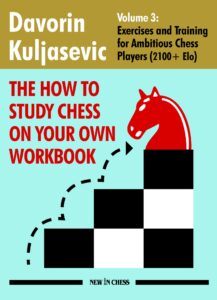
2. The Art of the Endgame, Jan Timman
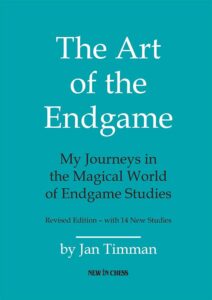
Solving endgame studies helps your endgame understanding and improves your calculation and visualization, but their main purpose and benefit is broadening your imagination and creativity. Being able to think unorthodoxly, in a creative manner uncommon in real play over the board, helps when dealing with complex positions and helps find resources an untrained eye wouldn’t be able to spot. The Art of the Endgame is considered by many to be the best collection of endgame studies ever written. It will surely enhance your creativity, improve your calculation, and earn you rating points!
The analysis provided for each study is flawless. As Timman writes in the introduction, composing studies with an engine has made his job much easier. He describes how, during the 70s and 80s, he would sometimes spend days trying to solve small problems that made his studies flawed. So the book has no mistakes, as is to be expected. Timman’s analysis and annotations are, as is the case with all of his books, entertaining, thorough, and very instructive.
Read The Art of the Endgame
3. Mark Dvoretsky: Recognizing Your Opponent’s Resources
Recognizing Your Opponent’s Resources may be the only book in existence that teaches you how to navigate positions in a smart way, having what your opponent wants to do in mind without it impeding your ability to also think and play actively and not to defend unnecessarily. I’m gonna be honest and say that I started this book several times and only managed to go through all the exercises on my fourth attempt.
They are very advanced for my level. I think this is a rare case of a book written for masters. That being said, I think solving all the problems, albeit with a low completion rate, has helped my play immensely. Making a mistake and then having Dvoretsky explain how I should have approached the position correctly may be more useful than correctly solving the problem in the first place. I’m gonna be honest and say that I started this book several times and only managed to go through all the exercises on my fourth attempt. They are very advanced for my level. I think this is a rare case of a book written for masters. That being said, I think solving all the problems, albeit with a low completion rate, has helped my play immensely.
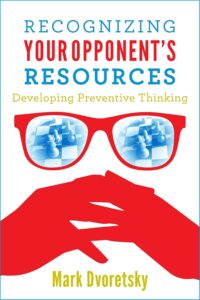
4. Zlotnik’s Middlegame Manual, Boris Zlotnik
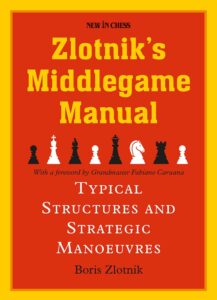
Zlotnik’s Middlegame Manual is a guide on how to think and plan based on the pawn structure. It consists of 6 chapters, each devoted to an important structure. The book is accompanied by 162 problems you can solve, divided into themes and corresponding to the chapters. Zlothink’s teaching approach was based on developing a feel for positions. In other words, he tried to teach his students, such as Fabiano Caruana, in a way that helped them develop a deep understanding of middlegame positions. The book is accompanied by 162 problems you can solve, divided into themes and corresponding to the chapters. The solutions are the true treasure trove. Zlotnik’s explanations of the positions are incredible. He managed to explain the essence of each position in an easily understandable way.
Read Zlotnik’s Middlegame Manual
5. GM Preparation: Thinking Inside the Box, Jacob Aagaard
Thinking Inside the Box is a chess book about everything. As opposed to the first five books in the series, which were workbooks specifically designed to develop the reader’s skills in calculation and strategic understanding, Thinking Inside the Box teaches the basics. Of everything. Every page introduces a new idea or a new concept, from determining your chess personality type to nutrition. In it Aagaard focuses on explaining concepts and principles, thinking patterns, and ways of improving decision making over the board. Thinking Inside the Box is certainly one of the most entertaining chess books I’ve read, while being useful at the same time.
Thinking Inside the Box is certainly one of the most entertaining chess books I’ve read, while being useful at the same time. It’s full of useful advice, numerous concepts one can try to apply (not everything is for everyone, though!), and methods of improving at chess on and off the board.
Think Inside the Box
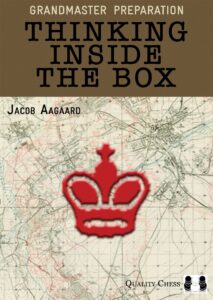
6. Zenon Franco: The Giant Chess Puzzle Book
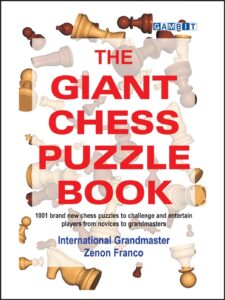
The Giant Chess Puzzle Book is a great resource for beginners and advanced players alike. It begins by covering every important tactical theme, concept and pattern one needs to understand in order to solve puzzles successfully and efficiently. It continues with a set of elementary, introductory problems, many of which are accompanied by written hints, something many tactics books lack.
From here, things get more difficult. The rest of the positions are harder, in increasing difficulty, finishing with problems on Grandmaster level, but still accompanied by hints to start with, making each chapter easy to approach, and each set of problems more understandable for inexperienced players.
Read The Giant Chess Puzzle Book
7. Martyn Kravtsiv: 400 Chess Strategy Puzzles
400 Chess Strategy Puzzles trains your positional and strategic understanding. Unlike most puzzle collections, it will teach you how to improve your position gradually, by asking the correct questions, and “talking to your pieces”. Kravtsiv explains each position well, annotating key parts of every important variation. He provides more than enough detail for advanced players, perhaps less so for those new to complex chess strategy. The book features positions from recent games played on all levels, it doesn’t focus on Grandmaster play alone, which makes it very unlikely you’ll encounter a position you’ve already seen. It’s divided into three sections: Pawns and structure, Pieces, and Mixed themes, each subdivided in increasing order of difficulty.
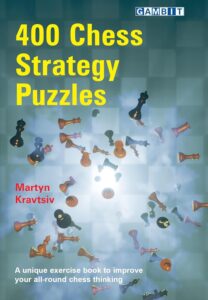
8. Mark Dvoretsky, Artur Yusupov: Technique in Chess
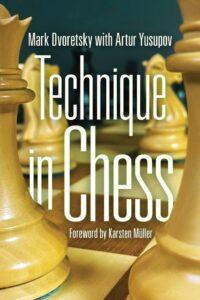

This book is the result of Yusupov’s research and work on Dvoretsky’s famous card files, his notes, unfinished articles, books and various pieces of analyses, practice material, and more, discovered after his recent passing. Using this material, Artur Yusupov, one of Dvoretsky’s most famous students, created Technique in Chess. The most important piece of knowledge, or a skill I think I managed to improve by going through the book, is converting advantages. Having good technique means breezing through to a handshake after going up a pawn instead of getting checkmated trying to keep your extra material. The book devotes three sections to developing your technique and your ability to convert flawlessly.


